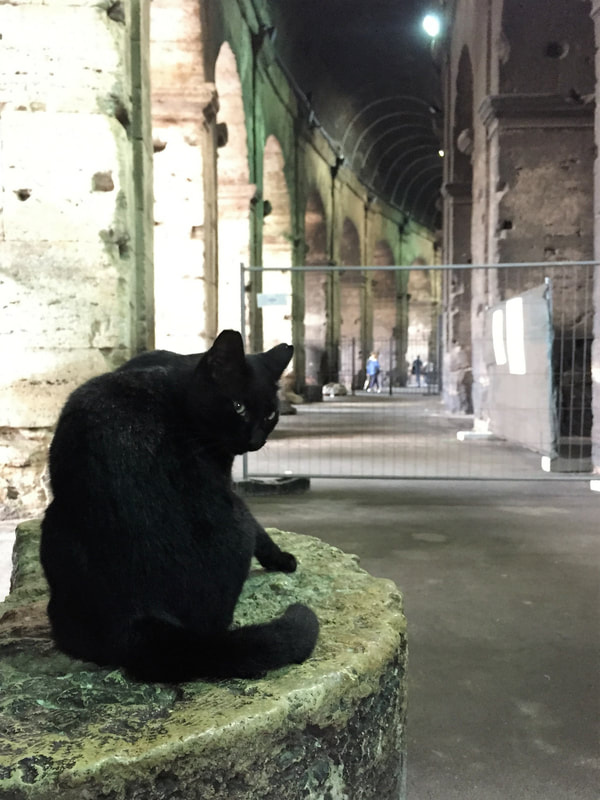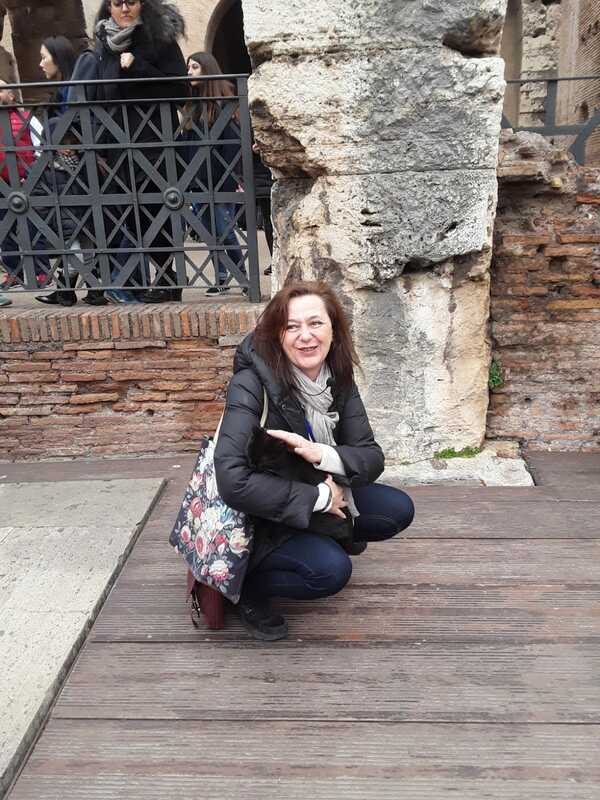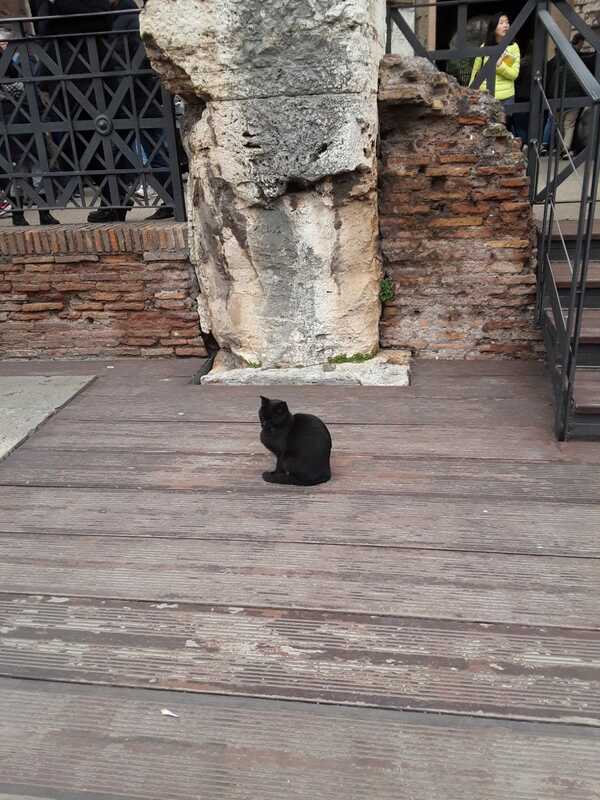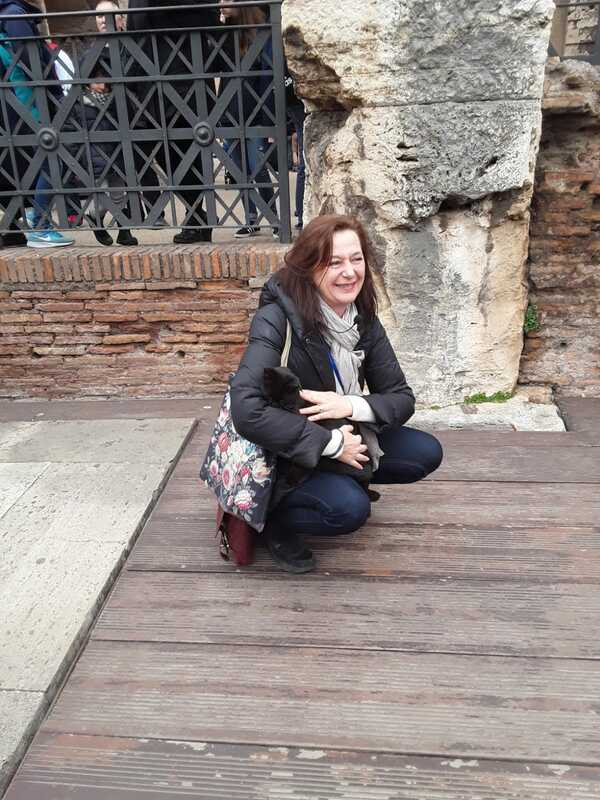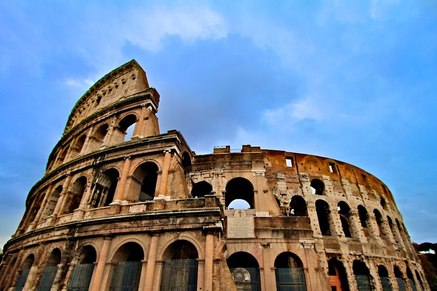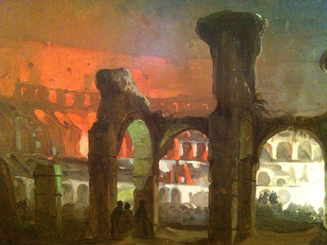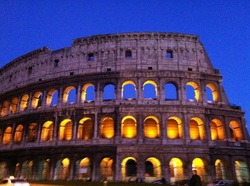| This is a legend now. Once, when the coliseum was fully accessible with no tickets, no security line, no crowds there used to be a cat colony inside the amphitheater. I was a child then. It seems a remote past, a mythological era, but the idea of the coliseum cats still persist today. Since many years the roman cats who are abandoned reside in an another archeological location, in largo Torre Argentina. It is true that we have a cat inside the coliseum, a fiery black cat I have seen in the venue in the past three years. We are fiends. |
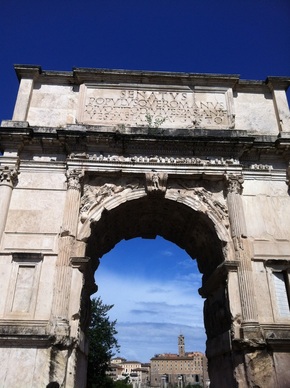 The Arch of Titus in Rome The Arch of Titus in Rome This is a report of the main happenings occurring in the 5 years of the Jews rebellion that led to the destruction of Jerusalem in 70ad. The main information on this period comes from ancient reports, mainly the one of Josephus the priest (37-100ad), a Jewish general captured by Vespasian in 68ad who wrote ‘the Jewish war’. In May 66ad the roman governor in Judea - Gessius Florius- sent his troops to Jerusalem’s upper market with instructions to kill everyone. The deaths were 3600: men, women and children. The governor demanded the Jews to demonstrate their submission by greeting 2 cohorts entering Jerusalem, as the Jews rebelled the consequence was terrible. At that time in Jerusalem there was a moderate party of the Jews led by Agrippa II (27-93ad), great grandson of Herod the great (73-4bc) appointed by the Romans. They attempted to cease the protest with no luck. The Jews were divided into the war party and the peace party. The priest Eleazar, captain of the temple, forbidden sacrifice paid by strangers thus impeding the longstanding custom of demonstrating loyalty by making offers to the temple on behalf of the emperor and Rome. According to Josephus, our main source of information, 'this action laid the foundation of the war with Rome'. 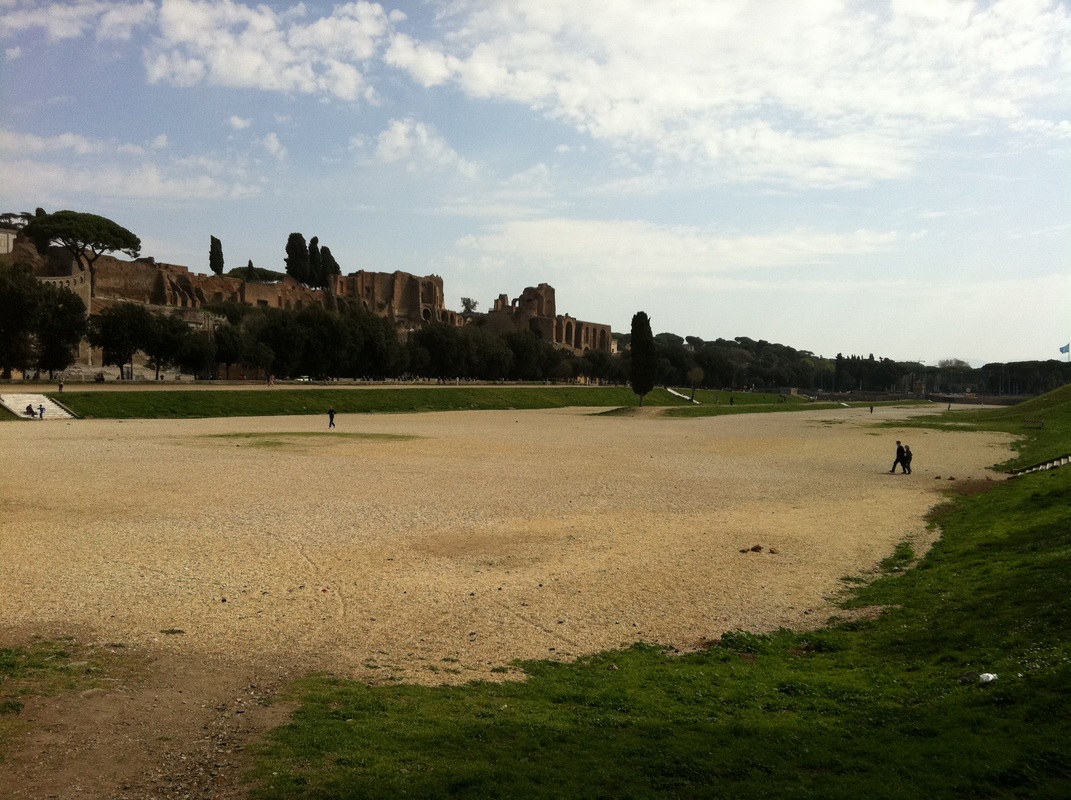 The length of the structure was 620m and between 140-150 meters wide. The seating surrounded the all of the arena with steps that were 1400m long. Each row could house 3500 spectators. The seats were 40am wide, 50cm in dept and the height of the step was 33cm. There were probably about 50 rows of seats summing up at least 150000 spectators. The racetrack was 550-580m long and 80m wide, with a total surface of 44.000square meters (12 times more than the coliseum). The track was covered with the finest sand, aimed to absorb easily the rain in case of bad weather and not to lift too much dust on the audience. The ‘spina’ : the central path around which the chariots were turning was 340 m long. In the Circus Maximus men and women sat together, it was an opportunity to start new love affairs… 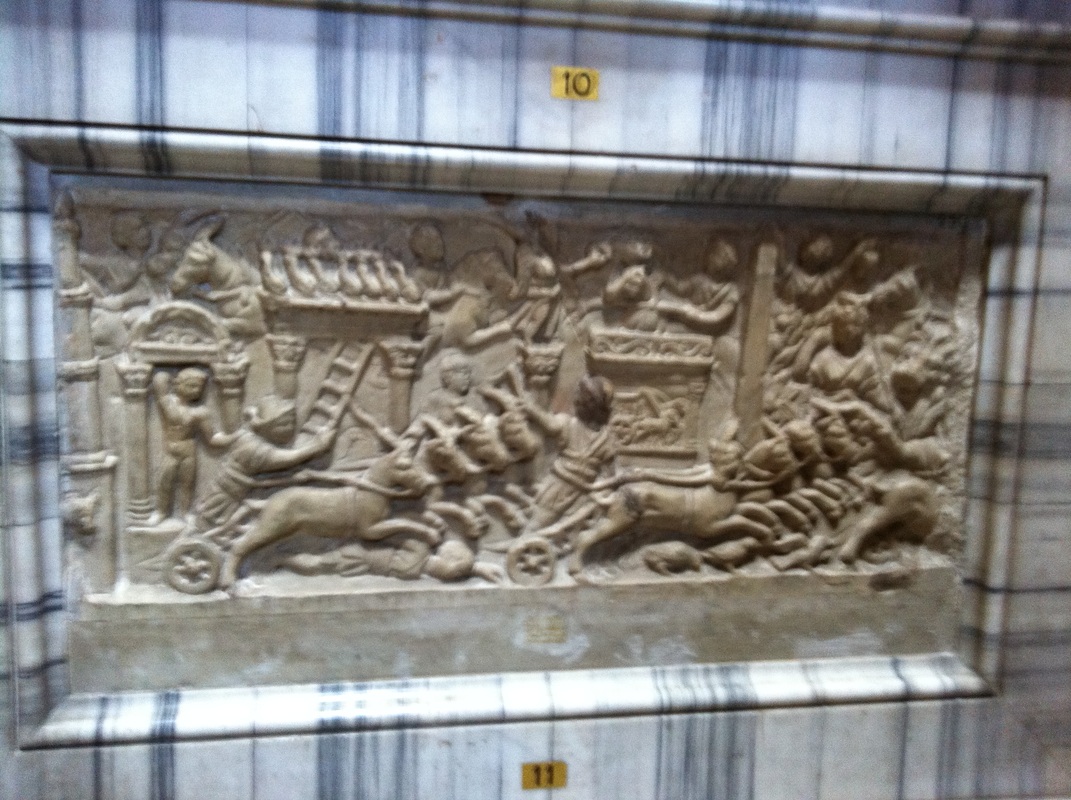 As you know in the circuses were large valleys, with seats all around, used in the ancient roman times for chariot races. The chariots were turning around a central line called ‘spina’. The most famous hippodrome of the past is the Circus Maximus in Rome. Augustus in 10bc brought an obelisk from Egypt to decorate the ‘spina’. The obelisks were considered, by both Egyptian and Romans, to represent the connection between the sky and the earth. The hippodrome was a little model of the cosmos: The obelisk was the sun, the ground represented the earth and the canal running in the middle of the spina was the sea. The four factions of chariot raiders represented the 4 seasons. 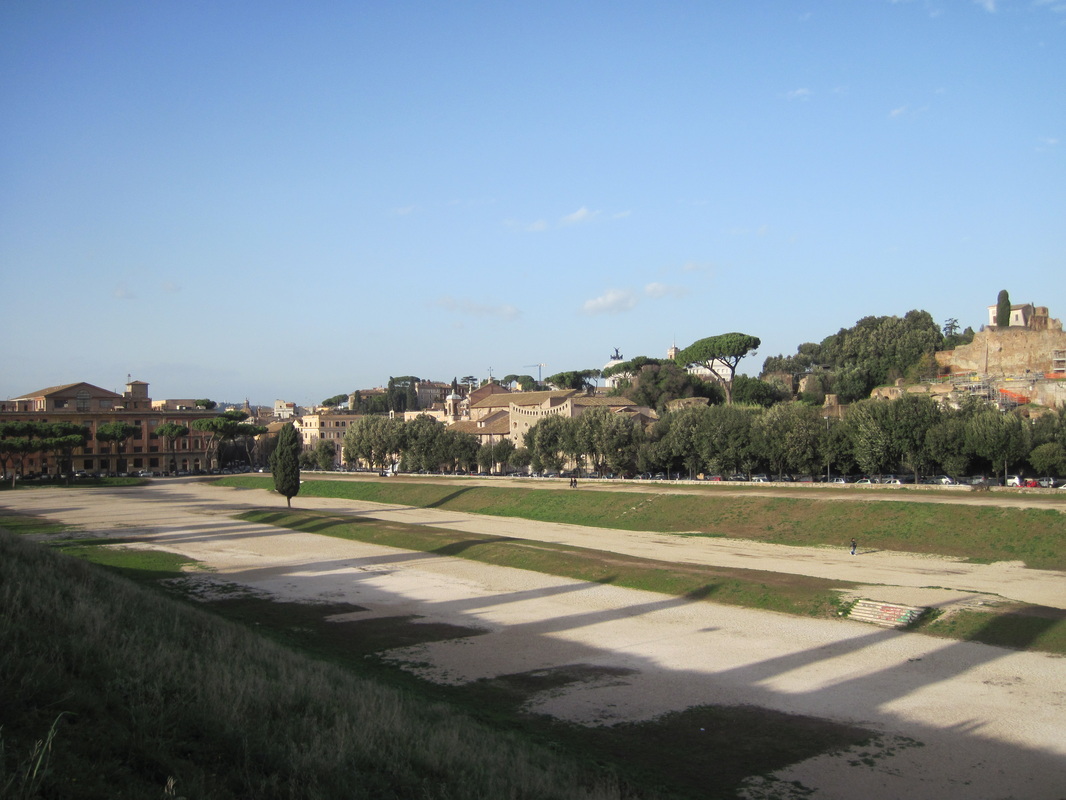 The Circus Maximus is nowadays a large valley between the Aventine and Palatine hill nevertheless its story is connected to the very origin of Rome. According to the legend, the founder and first king of Rome, Romolo, used these space to organize a celebration to the god Conso. Romolo got a problem: he started a city with plenty of men and few women, and the surrounding tribes were not willing to intermarry with the Romans. A brief video of one of the most precise description of ancient roman hunting.
In empirial age the hunting shows were frequently offered to the roman citizens throughout the roman empire in both circuses and arenas. Several species of wild animals were extinguished in the roman empire, as the lions and elephants in north Africa. The video shows wild beasts taken in the boats to be shipped. From the Villa Romana in piazza Armerina, Sicily. 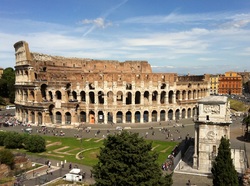 Soon the largest Colosseum's restoration in the past 70 years will start. It's supposed to last till 2015 and will be divided in different phases. The first will consist in cleaning the building with jet spray, mapping the state of preservation of the amphitheater, removing the 'ugly ' metal fencing on the ground floor arches and replacing with new railing. The northern and southern prospect will be restored too. This is an Ippolito Caffi painting dating to 1845, depicting bengala fireworks inside the coliseum.
There was a party!!! Palazzo Braschi Museum 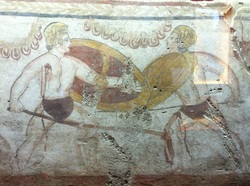 Frescoes decorating an ancient tomb Frescoes decorating an ancient tomb The origin of the gladiatorial games must likely be found in Etruria, where they formed part of the funereal ceremonies, replacing the older custom of human sacrifices. It seems they were connected to the cult of the god Saturn – an opinion confirmed by the fact that in Rome similar duels were organized during the saturnalia celebrations. 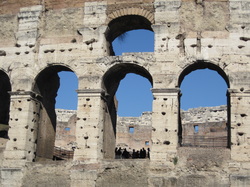 One of the curiosity attracting coliseum’s visitors attention are the many holes that can be noticed everywhere within the structure. These gave rise to same jokes, like the one of the enormous rats eager of marble, or to the wrong conviction coliseum was damaged during II World War bombings. Explanation has to be found in the dark ages following the fall of the Western Roman Empire in 476AD. |
My BlogThis blog is aimed to share with you my Roman experiences, reflections and researches. Categories
All
Archives
November 2019
|
